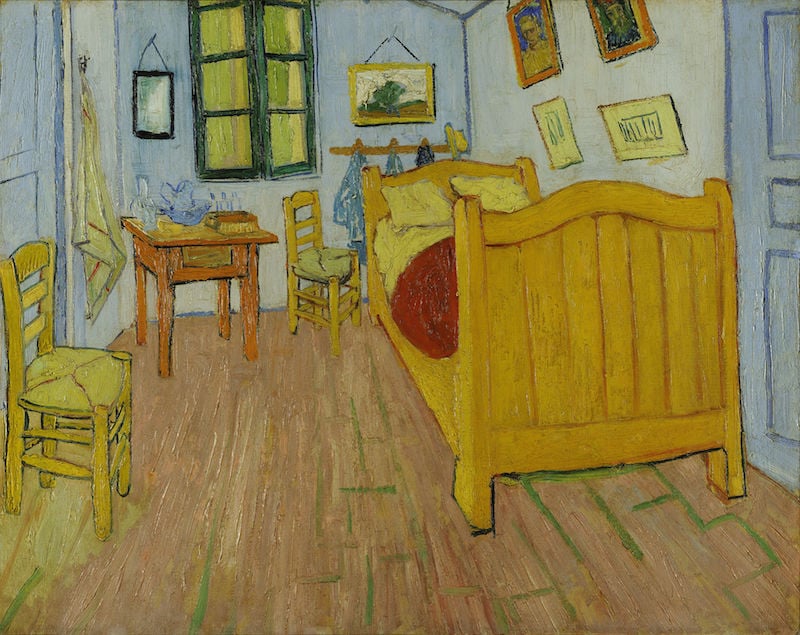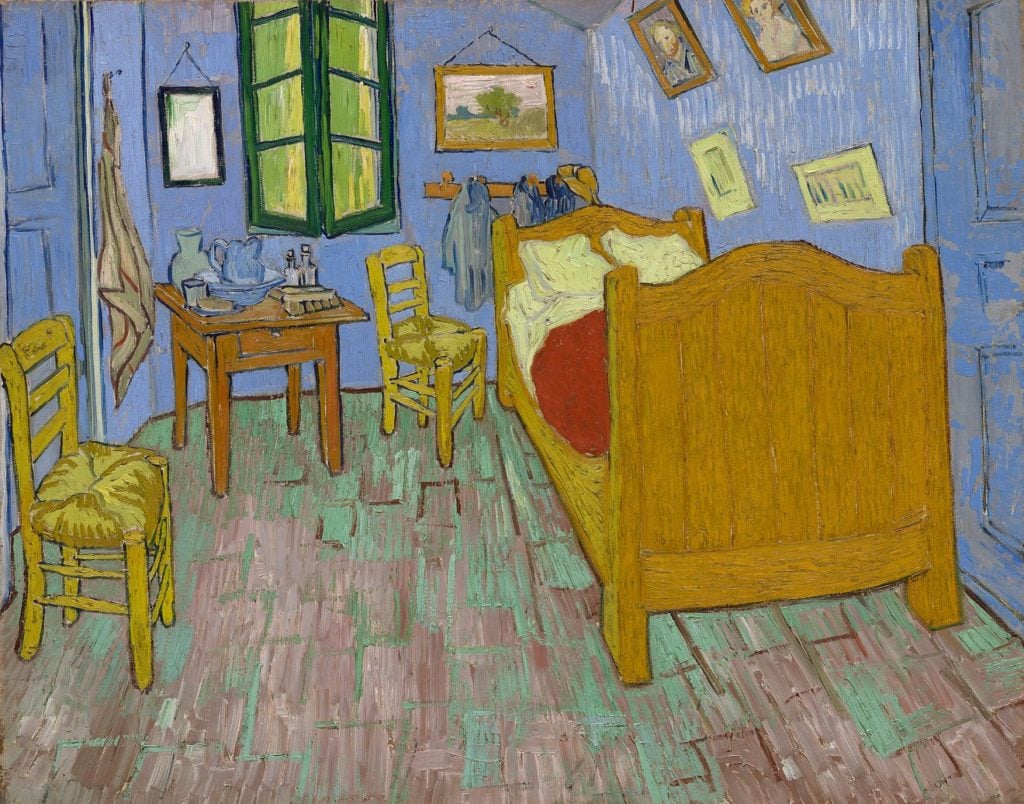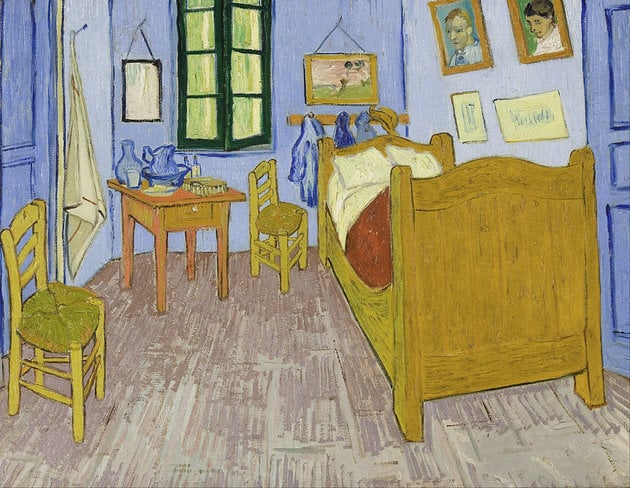Art & Exhibitions
New Study Finds Link Between Van Gogh’s Choice of Colors and His Mental Health
His palette became darker as his psyche declined.

His palette became darker as his psyche declined.

A new study claims to have found a correlation between the darkening of Vincent van Gogh’s color palette in his artwork and his declining mental health.
The study—which is based on Van Gogh’s three versions of The Bedroom, painted between 1888 and 1889—was commissioned by the Art Institute of Chicago to coincide with its current exhibition focusing on the three depictions of the artist’s bedroom in his house in Arles, southern France.
Pigment fading over the last 128 years has significantly lightened the works to the point where they appear similar in color, although they looked quite distinct when they were freshly painted.
Over the years natural chemical reactions in the paint and pigment changed the tone and luminescence of the paintings. “They’re light sensitive so it makes sense that the fading would progress from the outward in,” Francesca Casadio, an art conservation scientist at the at the American Association for the Advancement of Science (AAAS) told the Guardian.

Vincent Van Gogh The Bedroom (1889). Collection of the Art Institute of Chicago.
Researchers at the AAAS used an analysis technique known as x-ray fluorescence spectrometry to show that the artist painted each version progressively darker. The scientists suggest that the change was due to the gradual unraveling of the troubled artist’s psyche.
“At first glance they all look the same,” Casadio said, “But when you go deeper you can start to see that they tell us far more about the artist’s life and his quest for a home.”
Van Gogh finished the first version of The Bedroom in 1888, soon after moving to Arles to establish an artist’s commune. The painting is characterized by warm hues and soft lighting.
Due to water damage to the first canvas, the artist recreated the painting in 1889, and the artwork’s colors are markedly darker and icier. Van Gogh painted the artwork in an asylum in Saint-Rémy. At this point, his relationship with his longtime friend and collaborator Paul Gauguin had ended in an argument, and he had severed a part of his ear.

Vincent Van Gogh, The Bedroom (1889). Collection of the Musée d’Orsay, Paris.
The Dutch master also painted a third, smaller version of his bedroom as a gift to his mother and sister, and according to the Huffington Post, less than a year after he finished the final painting he shot and killed himself.
Casadio admitted that the accuracy of the study is restricted by limitations, and that the color reproductions devised by the scientists may not be representative of what the paintings have actually looked like fresh off the artist’s easel. “Barring the invention of a time machine it will still be an approximation,” she conceded.
Nevertheless it provides a fascinating insight into the state of mind of one of the most legendary painters in art history.